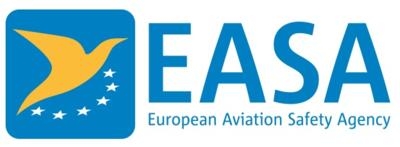Mon, Mar 30, 2020
Thermal Runaway May Lead To Fire
EASA has issued a Safety Information Bulletin (SIB) for lithium batteries installed on multiple models of Emergency Locator Transmitters installed aboard airliners.

These ELT and battery packs are known to be installed on, but not limited to Certification Specification CS-23 and CS-25 aeroplanes, CS-27 and CS-29 helicopters, or equivalent certification regulations, i.e. Federal Aviation Regulations (FAR) or Joint Aviation Requirements (JAR). Some of these ELT and battery packs may also be carried on board of an aircraft by the operator without being installed as an element of the aircraft's type design.
According to the SIB, The affected ELT and battery packs, in case of a thermal runaway, may release gases on fire. As this fire eventually self-extinguishes, the design remains compliant with the criteria of Appendix 1 of ETSO-C142a. Nevertheless, the presence of fire may affect the performance of the surrounding equipment, especially when the ELT is located close to safety equipment such as flotation devices.
EASA recommends holders of a type design approval (type certificate) or design change approval (supplemental type certificate, or minor change approval) to consider the presence of fire in addition to hot gases in assessing the effect at aircraft level of battery failures for the articles listed in the Applicability section of this SIB. This assessment should explicitly include the effect of fire or hot gases impingement on any stowed safety equipment installed in proximity of the battery such as life rafts, life jackets or emergency floatation systems. The EASA Special Condition on ‘Nonrechargeable Lithium Battery Installations’ provides additional considerations (also valid for CS-23, CS-27, CS-29 aircraft) to perform this assessment.
EASA recommends operators of aircraft that have any affected ELT or battery pack(s) carried on board which are not part of the approved aircraft type design, or design change, as applicable, to ensure that the presence of fire (in case of an ELT battery failure) cannot propagate to the surrounding material.
EASA recommends the use of an ELT model equivalent to those listed in the Applicability section of this SIB, but approved in accordance with RTCA DO-227A (as shown by an ETSO authorisation in accordance with ETSO-C142b or with ETSO-C142a with a deviation to use RTCA DO-227A) for the battery aspects.
(Source: EASA)
More News
Takeoff Roll The process whereby an aircraft is aligned with the runway centerline and the aircraft is moving with the intent to take off. For helicopters, this pertains to the act>[...]
“We’re proud of the hard work that went into receiving this validation, and it will be a welcome relief to our customers in the European Union. We couldn’t be mor>[...]
"Aircraft Spruce is pleased to announce the acquisition of the parts distribution operations of Wag-Aero. Wag-Aero was founded in the 1960’s by Dick and Bobbie Wagner in the >[...]
IDENT Feature The special feature in the Air Traffic Control Radar Beacon System (ATCRBS) equipment. It is used to immediately distinguish one displayed beacon target from other be>[...]
Aero Linx: Pararescue Air Force Pararescuemen, also known as PJs, are the only DoD elite combat forces specifically organized, trained, equipped, and postured to conduct full spect>[...]
 ANN's Daily Aero-Term (05.10.24): Takeoff Roll
ANN's Daily Aero-Term (05.10.24): Takeoff Roll Aero-News: Quote of the Day (05.10.24)
Aero-News: Quote of the Day (05.10.24) Aero-News: Quote of the Day (05.11.24)
Aero-News: Quote of the Day (05.11.24) ANN's Daily Aero-Term (05.11.24): IDENT Feature
ANN's Daily Aero-Term (05.11.24): IDENT Feature ANN's Daily Aero-Linx (05.11.24)
ANN's Daily Aero-Linx (05.11.24)



